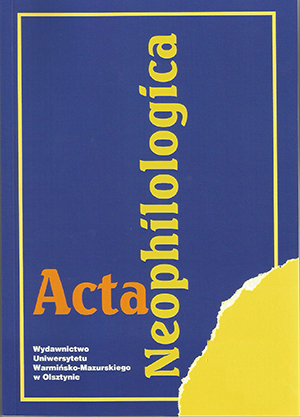Польские крохотки ди-пийцев
POLISH TRACES IN THE LITERATURE OF “DISPLACED PERSONS” (THE SECOND WAVE OF RUSSIAN EMIGRATION IN THE 20TH CENTURY)
Author(s): Joanna MianowskaSubject(s): Language and Literature Studies, Studies of Literature, Polish Literature
Published by: Wydawnictwo Uniwersytetu Warmińsko-Mazurskiego w Olsztynie
Keywords: refugees; Polish traces; campers; a colourful figure; forced labor camps; autobiographical prose
Summary/Abstract: This article analyzes selected fragments of literary works created by Russian writers who, havinglost their citizenship after 1945, became displaced and whose literature is commonly known as thesecond wave of Russian emigration. It is highlighted that the legacy of those who deliberately choseto fight the Soviet regime is hardly known, not only in Poland. In 2014 a collection of works createdby displaced persons – writers, poets, playwrights and literary critics of the second wave of emigrationentitled Raised from Nihility was published by a well-known Russian literary scholar V. Agenosov.The article examines Polish traces in the poetry of Evgenia Aleksandrovna Dimer, the authorof the poem Warsaw (a picture from the past) in which a central role is played by a violin that isartfully used by a violinist to play Chopin’s Polonaise. Polish traces can be also found in the proseof B.A. Filippov, for example in his labor camp short story The Hen, whose fragments are includedin V. Agenosov’s anthology. One of the characters is a process engineer in a design agency, a PoleRyszard Cywilski, a colorful and rather controversial figure. Many character traits of this Pole areworth considering through the prism of other nationalities as reflected in The Hen. Polish traces arepresent also in the prose of B. Shiryaev (I – the Russian Man) and V. Sven (Kublitsky) (Swallows).As new names of displaced writers continue to emerge, it is possible that Polish traces may becomepermanent motifs and themes.
Journal: Acta Neophilologica
- Issue Year: 2/2015
- Issue No: XVII
- Page Range: 165-174
- Page Count: 10
- Language: Russian

